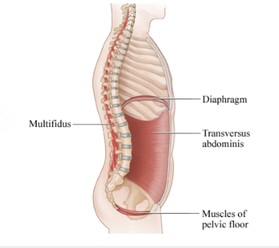What is the Pelvic Floor?The Pelvic floor is a group of muscles in both men and women that make up the base supporting structure of our body. Simply put the Pelvic floor is a group of muscles which sit in the base of the pelvis, they provide support to your organs and also control bladder, bowel and sexual function. Why is it important to train your pelvic floor? Pelvic floor weakness can be linked with issues such as incontinence (urinary & faecal), Pelvic organ prolapse and lower back pain. It is important that these muscles are engaged correctly to help reduce any of the above developing. How do you contract your pelvic floor?The most important thing to remember when you are contracting your pelvic floor, is that no-one should be able to tell that you are doing it. Nothing should move which is visible to anyone around you. You should also be able to maintain your normal breathing pattern. To perform a pelvic floor contraction correctly, close your eyes and imagine the sensation of stopping a wee mid flow. If you struggle to do this then you can try when on the toilet with the stop flow test. Can you stop the flow of urine mid flow for 1-2 seconds? Once you have managed this remember to restart the flow and finish your wee. (Please don’t use this as a regular exercise at it can cause infections). If you are struggling to identify the muscles with the stop flow test, you can use these visualisation techniques to help you engage the pelvic floor muscles:
How long should I contract them for? The pelvic floor is made up of slow and fast twitch fibres which have different roles. They work together to help stop any leaking if you are to jump or sneeze or if you are holding for longer periods. These fibres are recruited differently: Slow Twitch: these muscles are endurance muscles. They contract more smoothly and gently. To engage these, hold a pelvic floor contraction for 10 seconds, relax and repeat 10 times. Fast Twitch: They need to be able to react strongly and quickly. To train these you should do short and quick contractions. Try 10 x 1 second hold squeezes. Where can I practice my pelvic floor exercises? Literally anywhere! As long as your pelvis is in neutral. Try and link the exercise with another task so that you are more likely to remember to do them. Some examples are:
But please don’t do them while at traffic lights as your pelvis isn’t in the correct position in a car seat. Just remember it’s not the end of the world if you forget a day. Tomorrow is always a new day. If you would like 1:1 training or if you have any additional questions, please contact me on: [email protected]
0 Comments
Leave a Reply. |
AuthorWrite something about yourself. No need to be fancy, just an overview. ArchivesCategories |


 RSS Feed
RSS Feed
